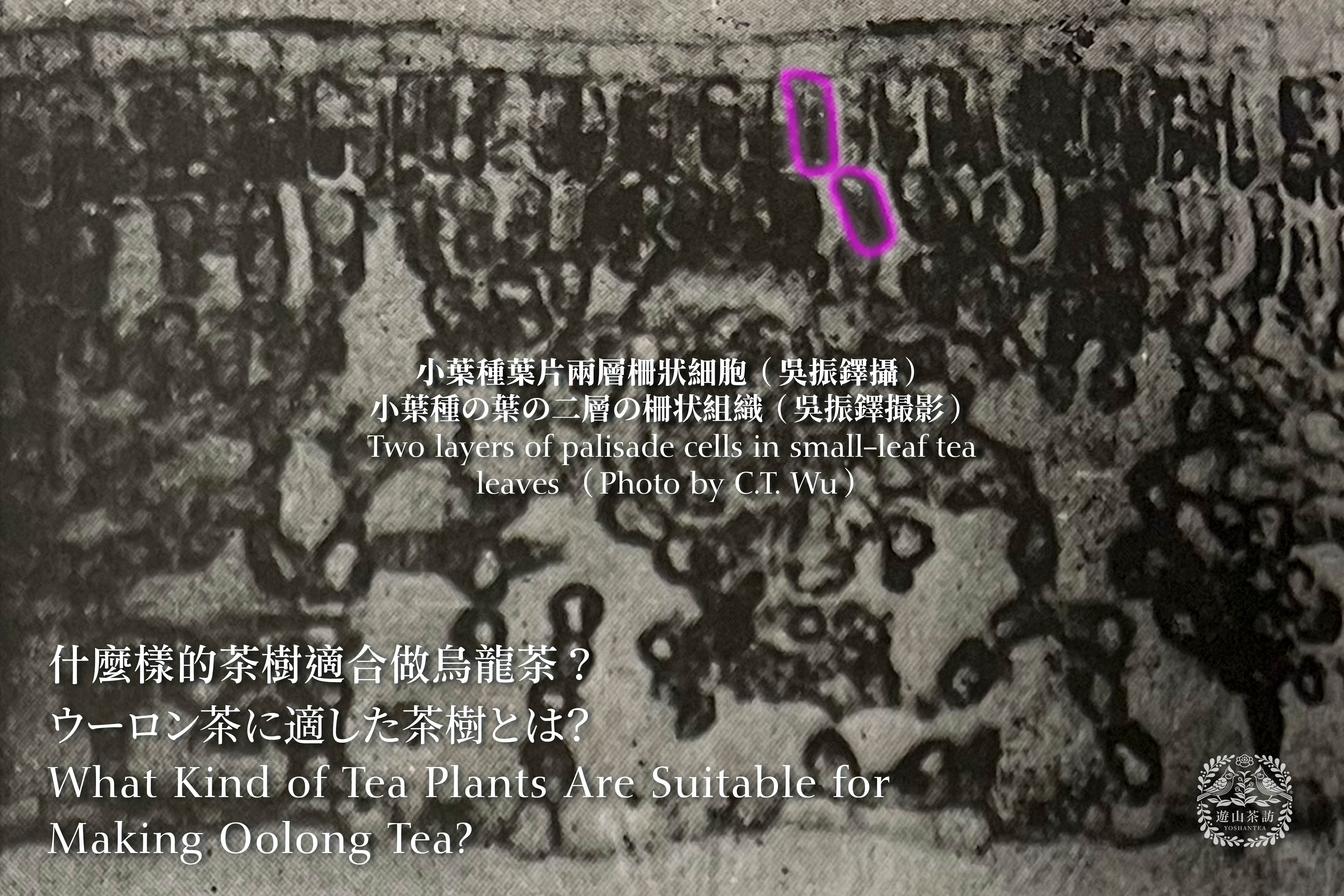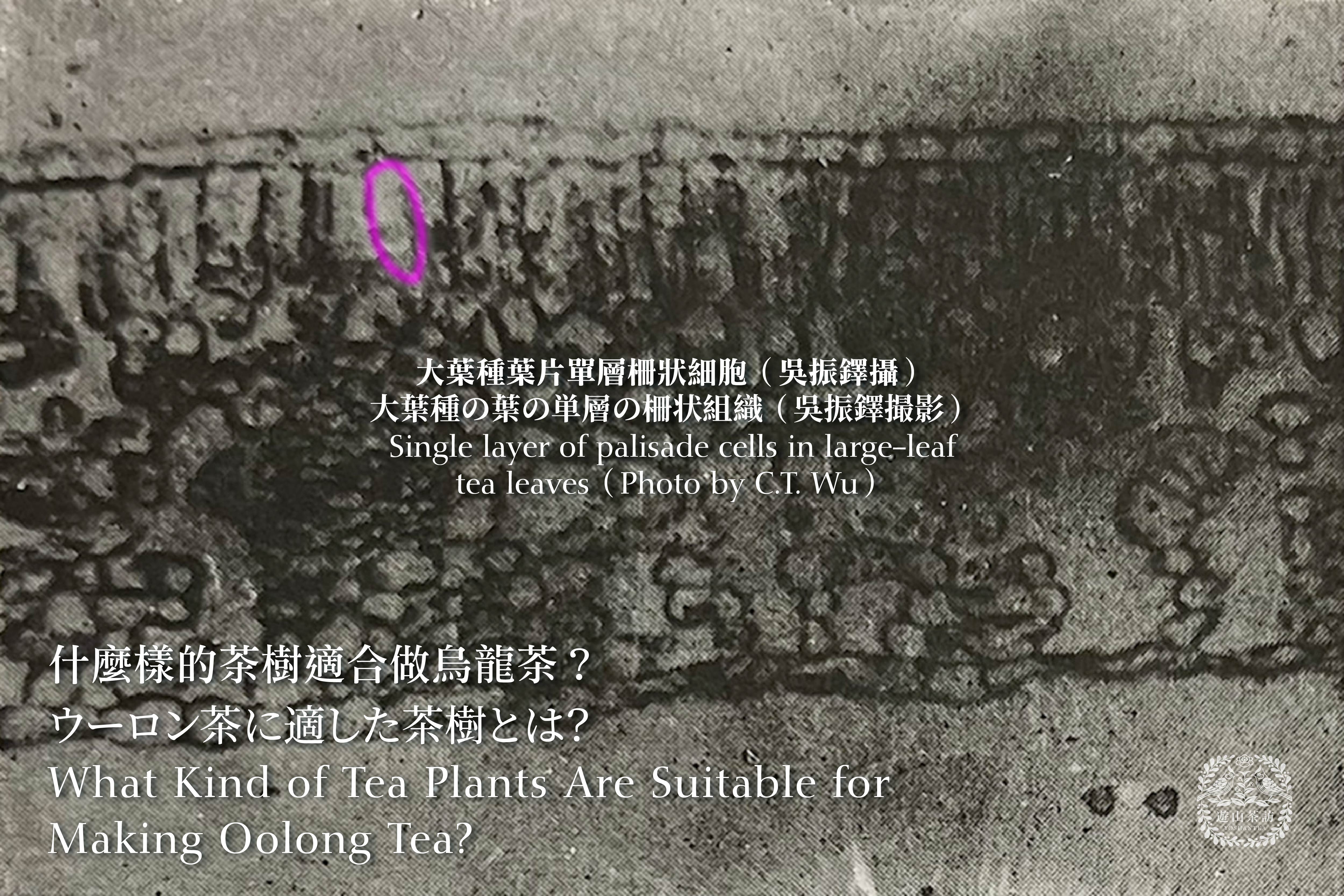
Hello, everyone:
I’m Andy, a tea enthusiast.
There are numerous varieties of tea plants,
but only those with specific characteristics are suitable for making "Oolong Tea."
The key factors are the "thickness of the wax layer" and
the "number of palisade cell layers."
Unlike green and black tea,
"tossing" is a unique step in making Oolong tea.
"Tossing" causes physical damage to the tea leaves,
and a sufficiently thick "wax layer" can enhance the leaf's defense.
The "wax layer" is the outermost protective layer of the leaf,
smooth and water-repellent.
Typically, small-leaf tea plants have a thicker "wax layer" compared to large-leaf ones.
According to research,
the thickness of small-leaf tea leaves can reach up to 4.53 micrometers,
while the thinnest large-leaf tea leaves are 1.13 micrometers.
1 micrometer = one-millionth of a meter.
If you have the chance to touch both small-leaf and large-leaf tea leaves,
you can observe that small-leaf tea leaves feel thicker and more resilient.
Moreover,
apart from the difference in leaf size between
small-leaf and large-leaf tea plants,
anatomical examination of the leaves reveals that
small-leaf tea leaves have two to three layers of palisade cells,
while large-leaf tea leaves only have one layer.
Small-leaf tea leaves have a lower content of
tea polyphenols compared to large-leaf ones,
making small-leaf tea plants more suitable for making Oolong tea.
I haven't yet identified the chemical substances within
the "palisade cells" and "spongy cells."
I’ll share any new discoveries with you as they come.
That’s all for today,
I hope this information is helpful to everyone.
Thank you.
Source: Selected Essays on Tea Science Research by C.T. Wu
#yoshantea #taiwantea #dongdingtea #oolongtea #teafactory #FSSC22000 #safetea #teaculture #teascience #smallleaftea #palisadecells
